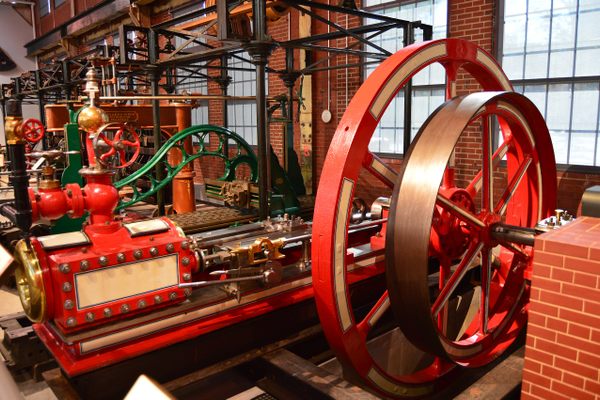About
Samuel Slater was an apprentice of the textile mill industry who learned the nuts and bolts of milling machinery in England. He brought this knowledge across the Atlantic to establish a mill near the shores of the Blackstone River in Pawtucket, Rhode Island, earning him the title of the "father of the American Industrial Revolution." Meanwhile in England, he was dubbed as "Slater the Traitor" because he shared his skills in the new continent.
The Old Slater Mill is now known as the birthplace of the American Industrial Revolution. This is the first cotton-spinning mill in the U.S., which operates using a water-power technique known as the Arkwright system that played a significant role in American industrial history. Slater also developed the "Rhode Island System," a management style where an entire family, including children between 7 and 12 years old, is hired to work in the factory. Mills throughout the Blackstone Valley followed suit.
The Old Slater Mill, now a museum, is filled with textile machines from the late 1700s. The factory has preserved a colonial style with its original beams, wood frames, and bell tower. It houses 24 textile machines dated from 1775 to 1922. Visitors are transported back in time as a tourist guide vividly demonstrates the use of the machinery whose sound echoes the industrial era.
The mill is located at the Slater Mill Historic Site along with two other historic buildings, the 1810 Wilkinson Mill and the 1758 Sylvanus Brown House. The latter features a collection of textile artifacts such as a loom, a spinning wheel, and other tools used to weave and make cloth by hand. Later on, this manual process was replicated in the Slater Mill but with machinery, making this house a predecessor of the Slater Mill. It is also believed that Samuel Slater spent his first night in Pawtucket in this house.
The Wilkinson Mill is the last piece of the puzzle. The Wilkinson family owned a shop where they built and fixed all the machinery used in the region. They built this mill to manufacture textiles. David Wilkinson, notably, invented a lathe for cutting screw threads that became a linchpin tool in the development of the water-power textile industry and the machinery system as a whole. In 1791, Hanna Wilkinson, David’s sister, married Samuel Slater, fostering a solid business relationship between the two families.
Today, visitors can tour the Wilkinson Mill, a registered historic site, which exhibits the lathe, and the old machinery used at that time. To visitors' delight, the tour guide ignites some of them, recreating a working environment in the factory. The mill still retains its original structure: a brick tower, a belfry, stone walls, and the splendid 16,000-pound waterwheel that still supplies water power to the machinery displayed.
As an added point of interest, paranormal activity has been reported in all three historic buildings. Some visitors have heard children voices, particularly a boy voice and the staff have found items misplaced or found in a different location, especially in the Sylvanus Brown House.
Related Tags
Know Before You Go
Entrance is free. Photography and video are allowed inside the museum. There is a small visitor information center, and visitors can tour Slater Mill with a guided tour. The site is open Thursday through Sunday from 10 a.m. to 4 p.m from May to December. The mill is a National Registered Historic Place, a National Historic Landmark, and belongs to the Blackstone River Valley National Historic Park.
Community Contributors
Added By
Published
November 19, 2018























































































































































